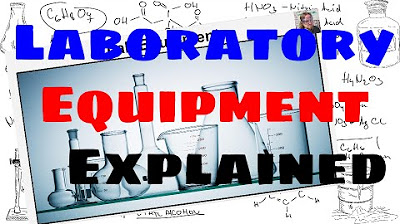Pure Substances vs Mixtures
Summary
TLDRIn this educational video, Mr. Millings explains the classification of matter, breaking it into two main categories: pure substances and mixtures. Pure substances include elements and compounds, which have distinct properties and require chemical processes to separate. Mixtures, on the other hand, can be homogeneous or heterogeneous, and they are separated using physical processes. Through relatable examples like gold, water, air, and fruit salad, viewers learn the differences between these categories and how to identify them. The video also includes a classification flowchart to help students categorize different substances.
Takeaways
- 😀 **Pure Substances** are either elements or compounds and cannot be separated by physical processes. Example: 24 Karat gold is a pure element.
- 😀 **Elements** are substances found on the periodic table and cannot be chemically broken down further. Examples include hydrogen, oxygen, and carbon.
- 😀 **Compounds** are formed when two or more elements chemically bond together, like water (H₂O) or carbon dioxide (CO₂). They require chemical processes to separate.
- 😀 **Mixtures** are combinations of pure substances that are not chemically bonded, like air, fruit salad, or concrete.
- 😀 **Homogeneous Mixtures** are uniform throughout and often referred to as solutions. Examples include Gatorade, tap water, and soda pop.
- 😀 **Heterogeneous Mixtures** are not uniform and show visible differences between components, like fruit salad, oil and vinegar, and concrete.
- 😀 **Homogeneous mixtures** can exist in different phases (solid, liquid, or gas), such as air (gas mixture) or salt dissolved in water.
- 😀 **Suspensions** are a type of heterogeneous mixture where particles are suspended in a liquid or gas but may settle out over time. Examples include muddy water and orange juice with pulp.
- 😀 **Separation of Mixtures** requires physical processes, like filtration or distillation, while compounds require chemical processes (e.g., electrolysis).
- 😀 **Colloids** are a specific type of homogeneous mixture with particles between 1 and 1,000 nanometers, such as fog or milk.
- 😀 **Periodic Table Elements** (like helium, boron, and nitrogen) are always pure substances and cannot be chemically separated into simpler forms.
Q & A
What are the two main categories of matter discussed in the video?
-The two main categories of matter discussed are pure substances and mixtures.
What defines a pure substance?
-A pure substance is either an element or a compound. It consists of one type of particle, and its composition is uniform throughout.
What are some examples of pure substances mentioned in the video?
-Examples of pure substances include 24-carat gold (an element), silver (an element), and water (a compound).
How are compounds different from elements?
-Compounds are made up of two or more different elements that are chemically bonded together, while elements are pure substances consisting of only one type of atom.
What type of process is required to separate compounds into their elements?
-A chemical process is required to separate compounds into their elements, such as electrolysis for water.
What is the difference between homogeneous and heterogeneous mixtures?
-Homogeneous mixtures are uniform throughout, meaning the composition is the same everywhere (e.g., air, soda). Heterogeneous mixtures have a varied composition and are not uniform (e.g., fruit salad, oil and vinegar).
What is an example of a homogeneous mixture that can be categorized as a solution?
-An example of a homogeneous mixture that is a solution is soda, where carbon dioxide gas is dissolved in water.
What are colloids, and how do they differ from solutions?
-Colloids are homogeneous mixtures in which microscopic particles (1 to 1,000 nanometers) are suspended throughout another substance, but do not dissolve completely. Examples include fog and milk.
What process is required to separate mixtures?
-Mixtures can be separated using physical processes, such as filtration, distillation, or centrifugation.
Can you provide an example of a heterogeneous mixture and explain why it’s categorized as such?
-An example of a heterogeneous mixture is a fruit salad, where different pieces of fruit are visibly distinct and not uniform throughout the mixture.
Outlines

هذا القسم متوفر فقط للمشتركين. يرجى الترقية للوصول إلى هذه الميزة.
قم بالترقية الآنMindmap

هذا القسم متوفر فقط للمشتركين. يرجى الترقية للوصول إلى هذه الميزة.
قم بالترقية الآنKeywords

هذا القسم متوفر فقط للمشتركين. يرجى الترقية للوصول إلى هذه الميزة.
قم بالترقية الآنHighlights

هذا القسم متوفر فقط للمشتركين. يرجى الترقية للوصول إلى هذه الميزة.
قم بالترقية الآنTranscripts

هذا القسم متوفر فقط للمشتركين. يرجى الترقية للوصول إلى هذه الميزة.
قم بالترقية الآنتصفح المزيد من مقاطع الفيديو ذات الصلة

The Four States of Matter - Explained

Lab Equipment - Explained

3. Gr 11 Life Sciences - Population Ecology - Theory 3 Mark Recapture Method

4. Gr 11 Life Sciences - Population Ecology - Worksheet 1

PENJASKES KELAS X - SOFTBALL

Introduction to Culture [AP Human Geography Review Unit 3 Topic 1]

Menentukan Mr ( massa molekul relatif )
5.0 / 5 (0 votes)
